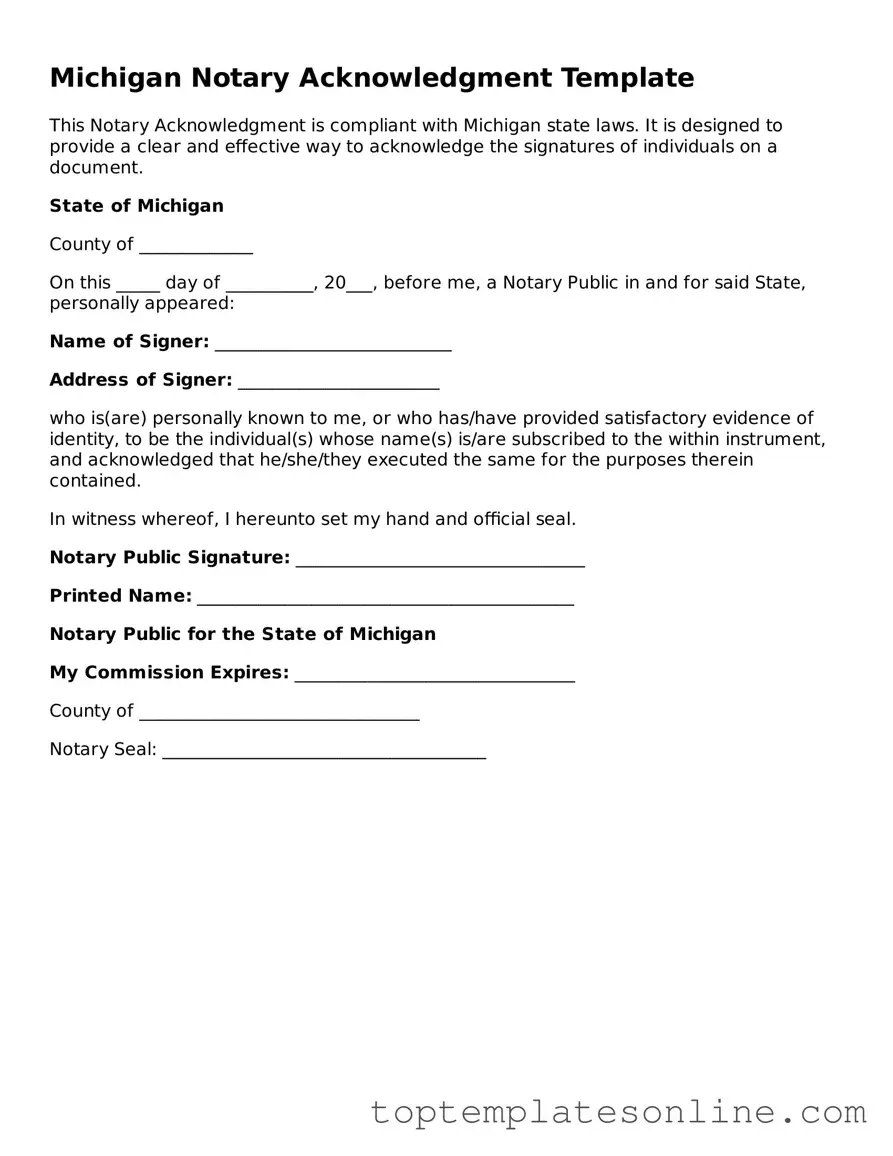Blank Notary Acknowledgement Template for Michigan State
The Michigan Notary Acknowledgement form serves as a vital document that verifies the identity of the signer and their willingness to sign a particular document. This form plays a crucial role in ensuring the authenticity of signatures and the integrity of legal transactions. By providing a clear and official acknowledgment, it helps to prevent fraud and misunderstandings in various legal matters.
Customize Notary Acknowledgement Here
